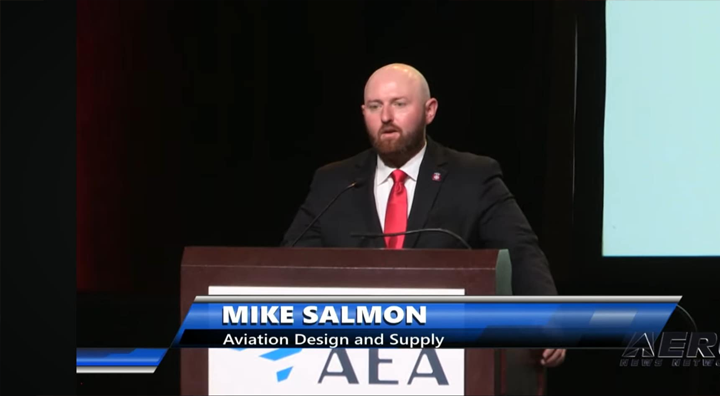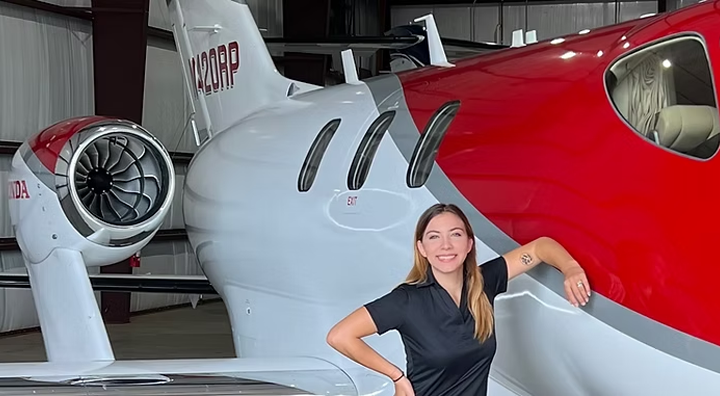Improving Aviation Logistics With Wearable Technology: Moviynt’s Innovative Journey
By Shawn Staerker
Ever feel like your phone disconnecting at the worst possible moment is ruining your day? Imagine if that disconnect meant a helicopter part didn’t get properly logged, or a warehouse order got lost. For Philip Matkovsky, CEO of Moviynt, solving these high-stakes connectivity problems in aviation has become his life’s work—and it all started with a “happy accident.”
A Political Science Major Finds a Tech Calling
Philip’s journey into technology wasn’t exactly planned. In fact, he chose political science in college specifically because “I didn’t have to do any math,” he admits with a laugh. But when graduate school introduced him to game theory—a field that uses mathematical models to predict how people make strategic decisions—everything changed.
“We were simulating congressional committee votes,” Philip explains. “I started programming in Fortran, and honestly, I just kind of backed into it.”
This unexpected introduction to programming led him to data mining and fraud detection in the late 1990s, when terms like “machine learning” weren’t yet mainstream. Sometimes the best career paths are the ones we discover by accident!
Bridging the Gap Between Mobile and Enterprise
Today, Philip leads Moviynt, a company that solves a critical problem in industries like aviation, warehousing, and logistics. Large organizations rely on massive database systems (called ERPs) to track everything from inventory to repair orders. But the workers who need that information are often in places with spotty WiFi or cell service.
“What happens a lot in warehouses, loading docks—you’ve got bad WiFi,” Philip explains. “You’re trying to process your order and something freezes in the middle, and you’re stuck.”
This might seem like a minor annoyance, but in high-precision industries like aviation, these disconnections can have huge consequences. If a technician can’t properly log that they’ve inspected a helicopter part, or a warehouse worker can’t confirm a delivery, the entire system breaks down.
Moviynt’s solution? Software that allows workers to keep working even when they’re disconnected.
“What we were able to figure out is how to make sure if the systems are down or not communicating, we can actually keep a worker working,” Philip says. “They’ve got all the data they need on their mobile device, and when they get connectivity back again, we just push the updates and nothing is lost.”
From Smartphones to Smart Glasses
While Moviynt started with smartphones and tablets, everything changed when they became part of Vuzix, a company that makes smart glasses. Suddenly, Philip and his team had to rethink how wearable technology in aviation works when you don’t have a screen to touch or a keyboard to type on
“We started writing software for the first time ever with only eyes and voice to guide you,” Philip says. “Just the vision on your glasses and the voice in spoken command or feedback coming from the software itself.”
Their first attempt? Simply taking a mobile app and putting it on smart glasses. It didn’t work well. Users quickly got tired of saying “next, next, next” hundreds of times a day. So they reimagined everything.
“Bit by bit, what we learned was the software got started to hide a little bit more,” Philip explains. “It started to learn what you were doing next on your job, so that if I knew that I had to look somewhere and grab something, I look, I scan, I completed that step, and the software moves forward without me having to say anything.”
Real-World Impact: Airbus Helicopters
One of Moviynt’s biggest success stories is their work with Airbus Helicopters in the US. The aerospace giant needed software that didn’t slow workers down or break constantly.
“In the old days, it would take like two days of shadowing a supervisor to learn your job,” Philip shares. “We probably got it down to about an hour.”
Their most impressive application? Packing helicopter parts. Imagine trying to safely package something as critical and valuable as a rotor blade while also tracking every single part and its associated batch number (crucial for safety in aerospace).
“We used machine learning that allows you just to look at a code and it automatically scans the code,” Philip says. “I know it belongs to this batch. I’m down one on my task. And then the worker can pack that rotor blade and then go to the smaller items.”
Workers wearing Vuzix smart glasses can now process orders without typing, without paper, and without being tied to a computer. The result? They’re both faster and more precise.
The Future of Wearable Technology in Aviation
Philip sees enormous potential for wearable technology in aviation beyond just warehousing and parts management. One exciting possibility is using the technology for flight simulation and training.
“Being able to have an immersive experience for flight simulation that is a much more affordable version of technology,” he suggests. Instead of relying entirely on expensive flight simulators, flight schools could use wearable technology to create immersive training experiences at a fraction of the cost.
The always-on camera in smart glasses could also be a game-changer for maintenance.
“Look at this airframe and tell me if it’s got any kinds of issues,” Philip imagines. “As I’m walking the airframe, I can now spot the hot spots that I should actually be paying attention to.”
Even for pilots, Philip envisions a day where wearable technology could provide additional information during flight, though he acknowledges that’s still a bit further in the future.
Advice for Future Tech Innovators
For young people interested in pursuing careers in AI, AR, and machine learning, Philip offers three different pathways:
- Learn to code: Today, he recommends Python as a powerful starting point.
- Learn to map processes: “If you can map a process and understand how tasks are performed, just understanding workflow is a really powerful type of knowledge,” he says.
- Learn data science: “One of the coolest things I’ve ever done was training neural networks,” Philip shares.
The good news? You don’t need to be a coding genius to succeed in this field. “Your listeners shouldn’t think that if I can’t code, I don’t have a future in this business,” Philip stresses. “There’s two other disciplines that are critical.”
Want to hear more about Philip’s journey and the future of wearable technology in aviation? Check out his full interview on The Future in Flight Podcast Episode 15! And if you’re interested in internship opportunities at Moviynt, visit their website at moviynt.com.


